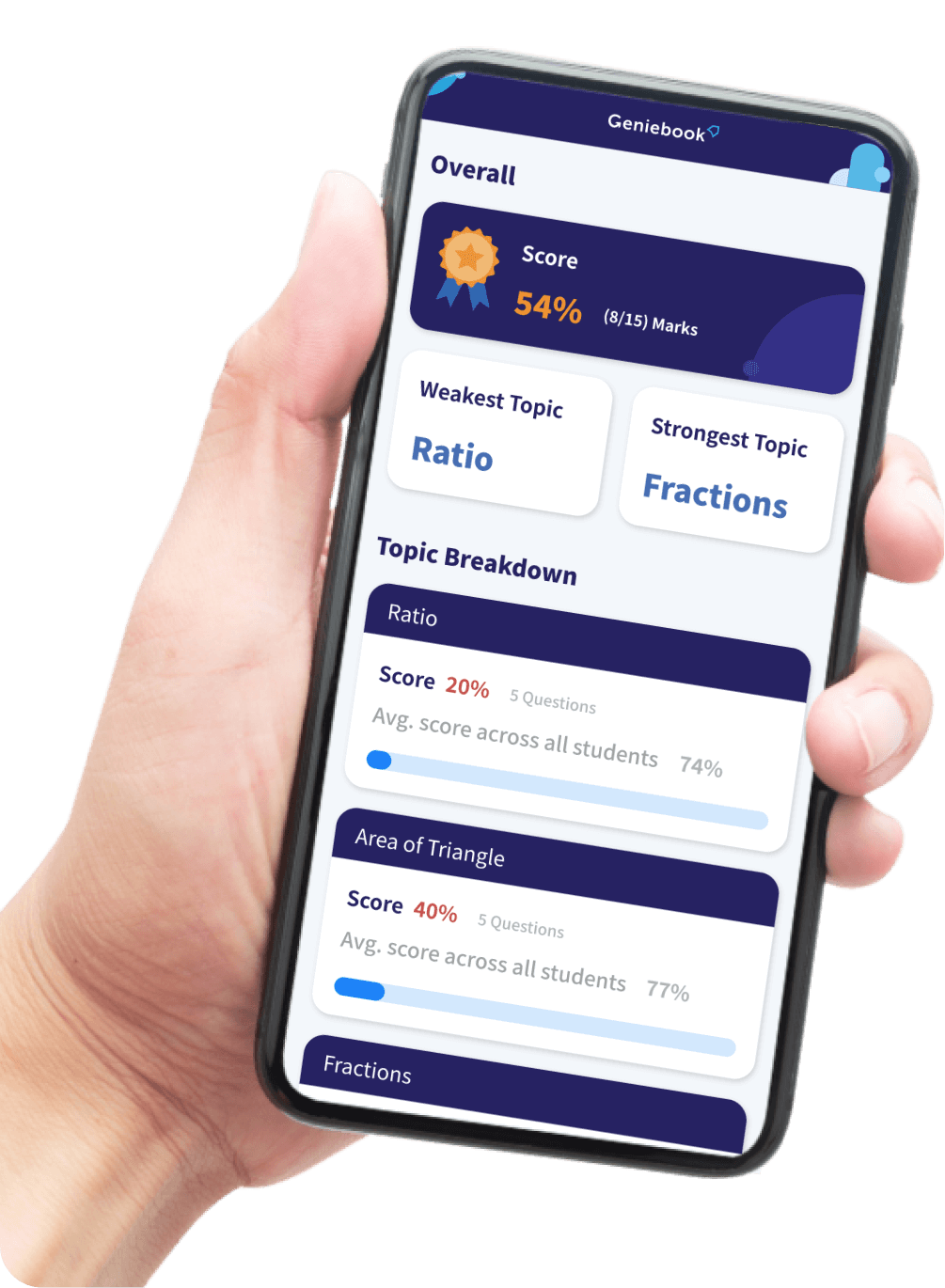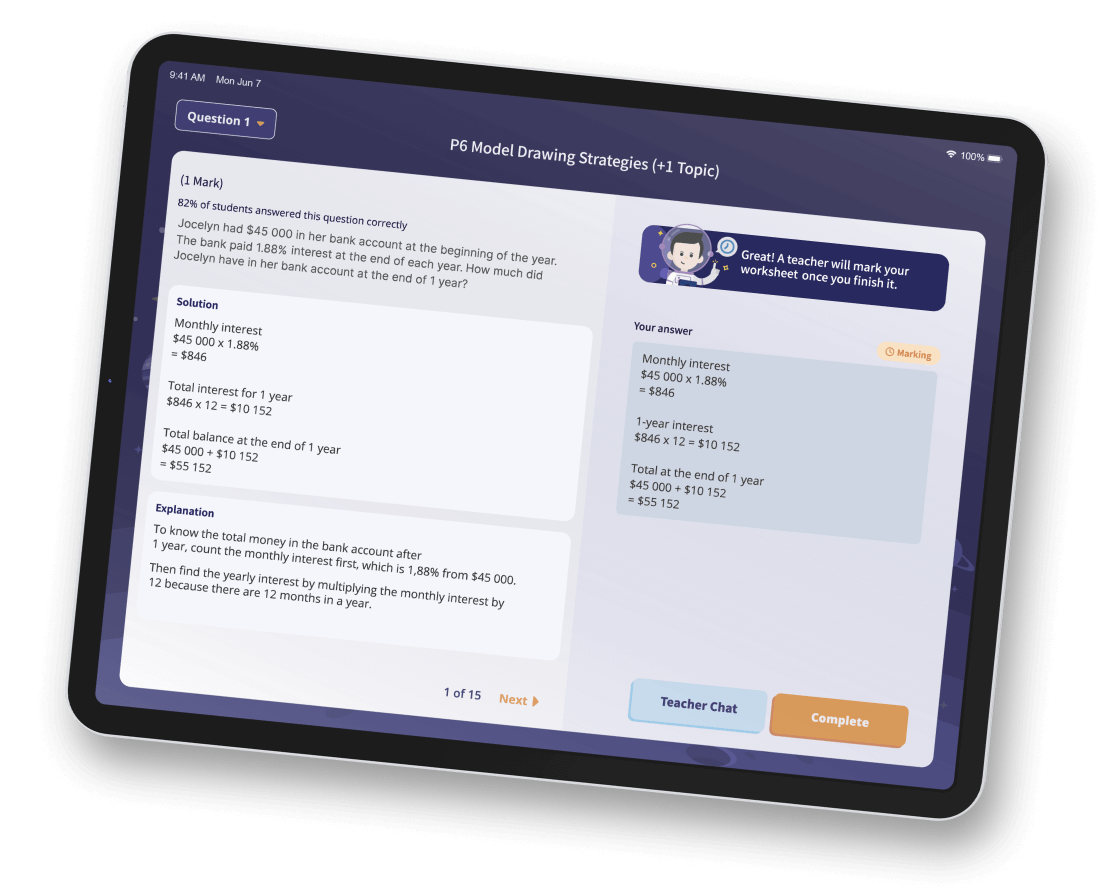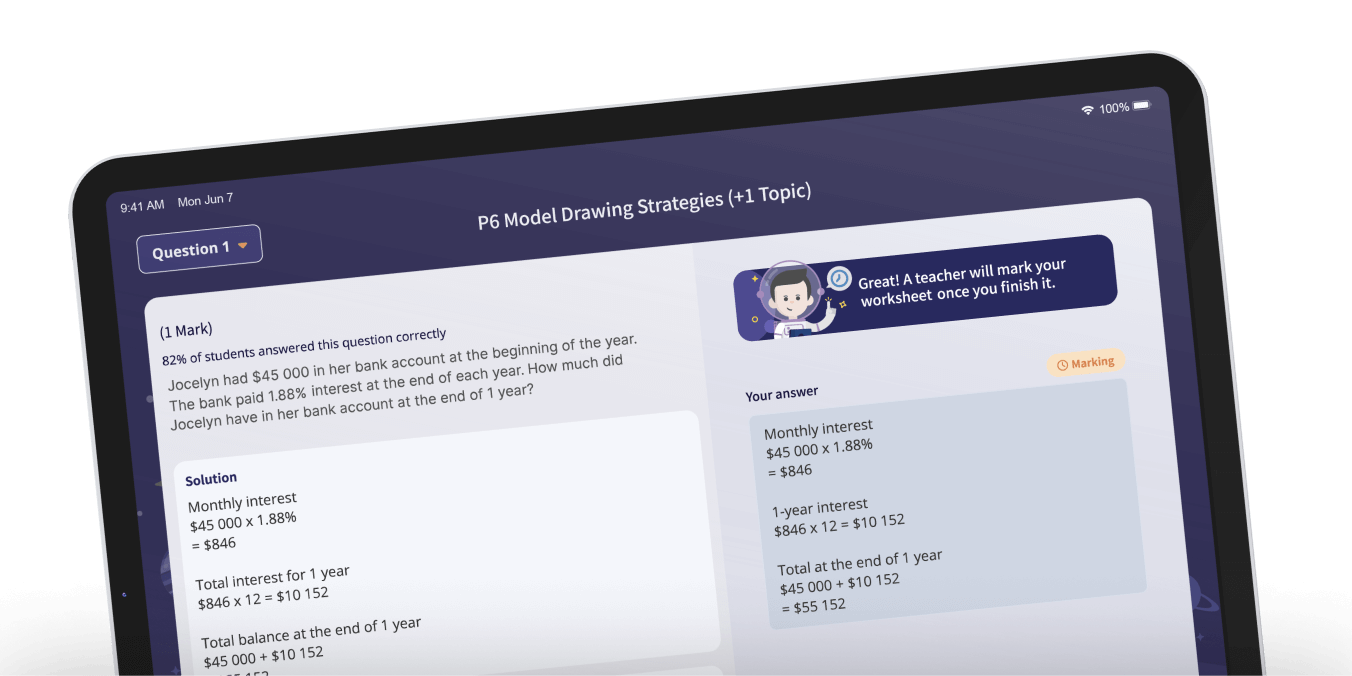Primary 3 Maths
The primary 3 Mathematics syllabus is broadly divided into 3 categories: Numbers and Algebra, Measurements and Geometry, and Statistics. Students will work with a wider range of numbers (up to 10,000) and be expected to solve more complex quantifiable problems that require a higher level of critical thinking. New topics introduced in Primary 3 include angles, area and perimeter, perpendicular and parallel lines, and bar graphs.
Download Exam Papers
Click here for free Primary 3 Maths exam papers!
Strategies For Teaching Primary 3 Maths
Use a variety of examples
When revising for Maths, it's important to use different numbers in the examples to solidify the concepts through repetition and pattern recognition. This can greatly enhance your child's capacity to comprehend Maths structures and ideas. By utilising the same language and representation as the initial examples, students can build on their previous knowledge and improve their comprehension as the questions become more complex. Consider encouraging your child to create their own examples so that they can understand how new work follows on from previous work.
Use meaningful examples
When using a wide variety of examples to reinforce understanding, pay close attention to the numbers used in the questions. Be sure to only use appropriate numerical values that match your child’s level of understanding. It's important to strike a balance between making the material challenging and not too difficult for the child to comprehend. If a question contains numbers that are too large, simply tailor the examples and questions to your child's abilities. This approach will ensure that your child is adequately challenged and stretched while not being overwhelmed.
How to make learning Primary 3 Maths fun?
Making Primary 3 Maths fun can help children better understand and enjoy the subject. Parents or teachers can use several strategies to make learning more engaging and enjoyable for children, such as utilising cool card games that help kids visualise Maths concepts or incorporating real-life situations where Maths is applied. Additionally, technology is an excellent resource that parents can use to make learning Maths more interactive. For students who’re up for a challenge, encourage them to join Geniebook Arena and participate in daily quizzes to earn exciting rewards! Group activities, such as working together to solve Math puzzles or engaging in Math lesson discussions with classmates, can also make Math learning more fun for primary 3 students. The use of rewards systems such as recognition for progress or achievements can give children an extra motivation to excel in Math, helping to make the learning experience more enjoyable. By implementing these strategies, children can develop a strong interest in Maths, which can lead to better understanding, improved retention of concepts, and academic success in the subject.
Common challenges when teaching Primary 3 Maths
Teaching Primary 3 Maths as a busy working parent can be a challenging task due to limited time and resources. Parents may struggle to manage their work responsibilities and teach their child Maths effectively, especially if they are not familiar with the current curriculum or lack teaching experience. Engaging the child during lessons can also be difficult, particularly if they have limited attention spans or find the subject challenging. To overcome these challenges, parents can set up dedicated time slots for Maths lessons and use online resources or study materials to supplement their teaching. Seeking guidance and advice from other parents or their child's teacher can also be helpful in developing effective teaching techniques and keeping their child motivated and engaged during lessons.
Frequently Asked Questions (FAQs)
What are some common misconceptions students have about Primary 3 Maths?
To prepare for Primary 3 Math exams, it is crucial for students to takes a structured approach. One of the first steps in preparing for these exams is to understand the exam format. This includes knowing the types of questions that may be asked, the number of questions, and the time allocated for the exam. By doing so, students can get a better sense of what to expect and adjust their preparation accordingly. Next, students should review the basic concepts and formulas covered in class. This involves going through their notes, textbooks, and online resources to identify any areas of weakness that require additional attention. Regular practice is also crucial for mastering Math skills, so students should set aside time for daily or weekly practice sessions. They can solve different types of Maths problems and exercises to improve their skills and speed. When students encounter difficulties, encourage them to seek help from their teachers or parents. Students can also participate in study groups, online forums or seek additional support to help them better understand the concepts and get more practice.
What are some key differences between Primary 2 and Primary 3 Maths?
In primary 3, students are introduced to a wider range of numbers and advanced topics. For instance, students in primary 3 are expected to work with numbers up to 10,000 instead of 1000, and will also be introduced to the topic of Long Division. Last but not least, problem sums in primary 3 are less straightforward and solving them require more steps.
How can parents support their child's learning in Primary 3 Maths?
One of the biggest challenges students will encounter is with regard to the topic of Multiplication. Consider helping your child get comfortable with the topic simply by incorporating activities that help them develop their multiplication skills into your study routine. For starters, consider memorising the tables in chunks. Have your child grab a piece of paper and write down all the 2’s from 1 to 10. Do so for a week, then move on to the next set. Alternatively, you can also get your child to practise skip-counting, as well as reciting the multiplication table forward and backward.
Popular Searches
English | Maths | Grammar And Vocabulary | Grammar And Editing | Grammar And Comprehension | Numbers To 10 | Shapes | Addition And Subtraction Within 10 | P1 Exam Test Papers
English | Maths | Prepositions | Comprehension | Editing | Tenses / Subject-Verb Agreement | Multiplication And Division | Fractions | Volume | P2 Exam Test Papers
English | Maths | Science | Volume | Fractions | Bar Graphs | Angles | Tenses | Editing | Prepositions | Digestive System | Diversity Of Animals | Diversity Of Plants
English | Maths | Science | Comprehension | Adverbs | Adjectives | Multiplication | Decimals | Fractions | Matter | Animal Life Cycle | Light | P4 Exam Test Papers
English | Maths | Science | Pronouns: Demonstrative, Possessive & Reflexive | Verbs: Modals & Interrogatives | Synthesis & Transformation | Percentage, Fractions And Decimals | Ratio | Electrical Systems | Plant Reproduction: Structures And Pollination | P5 Exam Test Papers
English | Maths | Science | Composition Structure | Active And Passive Voice | Grammar Close & Visual Text | Algebra | Fractions Of Remainder | Interaction Of Forces: Friction | Interaction: Introduction to Force | P6 Exam Test Papers
Secondary 1 | S1 English | S1 Maths | S1 Science | Secondary 2 | S2 English | S2 Maths | S2 Science | Secondary 3 | S3 Maths | S3 Physics | S3 Chemistry | S3 E-Maths | S3 A-Maths | Secondary 4 | S4 Maths | S4 Physics | S4 Chemistry | S4 E-Maths | S4 A-Maths


 SG
SG  VN
VN 












